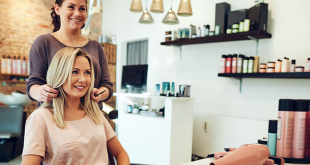Pimples and acne can leave unsightly scars on the face. But you don’t have to live with these skin injuries permanently! We explain how to get rid of acne scars.
Pimples are really uncomfortable people. First, they come and rise from the skin with their redness, pustules and nodules – and then, in the worst case, they also leave scars. Anyone who suffers from such “holes” in the skin knows how uncomfortable they are. You frequently have the feeling of being looked at, and actually, you just want your skin to be even. The good news: there are now great methods to significantly reduce or even remove acne and acne scars. There is also a lot that can be done to prevent acne scars from appearing in the first place. To do this, it is essential to know how acne scars develop.
Why and how do acne scars develop?
In principle, an impurity is an inflammation. Like a small wound, it heals on its own after a specific time. But how does a pimple turn into a scar? “Acne scars develop when the basal cell layer between the upper and dermis is damaged in the course of the inflammation,” says Dr Susanne Steinkraus from the Skin Treatment Institute in Hamburg. “In this way, the inflammation can penetrate into the deeper layers of the skin, where the nodular inflammation causes a scar,” explains the dermatologist. “The same applies if you squeeze incorrectly in acne and squeeze blackheads or pimples – or pick at the crusts of healing areas.” Therefore, you should never express a pimple yourself from the outset but always consult a beautician.
How are acne scars noticeable on the skin?
“At first, the skin is reddish-brown when inflamed. Then crusts appear and peel off. After that, the skin appears sunken or drawn in,” explains Steinkraus. Acne scars can theoretically appear all over the body and face – wherever impurities occur most frequently. They are typically on the cheeks, on the chin or in the back area. Incidentally, one should not confuse acne scars with pimple marks. Pimple marks are pigment shifts – so-called post-inflammatory hyperpigmentation – that arise after the inflammation. If you protect them well from the sun, they will fade over time.
How can you prevent acne scars?
When it comes to acne scars, prevention clearly means one thing: stay away from pimples! “In the best case, you should regularly do medical cleansing for pimples and blemishes,” recommends auragano. “You should also cleanse and care for your face to match your oily skin type.” If it doesn’t get better, it is essential to see a dermatologist. He tries to treat the inflammation with antibiotics. “In more pronounced cases and especially when scarring is beginning to form, tablet treatment is required,” says Steinkraus. “Either with an antibiotic or with vitamin A acid derivatives.”
If you can’t keep your fingers out of your face, you should remember one rule of thumb: If you don’t press anything the second time, stop immediately! There are also some rules for cleaning out impurities. Before doing this, you should always disinfect your hands, clean the skin, and pretend it with tonic. Besides, it must not be pressed without facial tissue. To do this, wrap a cosmetic tissue around both index fingers. After cleaning, it is essential to disinfect the area with wound spray.
How do you care for your acne scars skin at home?
“Exfoliates are great for treating acne and acne scars at home,” says Experts . “My patients always ask me which peeling is best. My experience has shown that peelings with fruit acids (AHA) are very suitable for smoothing the skin. However, my favorite is a higher dose of fruit acid,” Salience Gel 15 % AHA “, so the expert. The peeling has a better peeling effect, but may only be used in practices.” By the way, fruit acid has nothing to do with household remedies such as lemon juice from the lemon. Such home remedies as lemon, onion ointment, Shea butter (which clogs the pores in acne) should definitely be avoided when treating acne scars. Instead of producing avoidable remedies yourself, you should definitely rely on professional means!
What means can the dermatologist even use to treat severe acne scars?
In addition to fruit acid, there are currently three very effective treatments at the skin doctor used for acne scars and significantly improve the complexion.
The dermatologist can treat the skin with a Fraxel laser, which stimulates collagen fibres and fills the scars from the depths. In the case of ice axe scars, the scar edges can also be smoothed.
Here, too, the deep collagen production is stimulated. The doctor moves a needling roller (hand roller with small needles) over the skin and injures the tissue with tiny incisions. This enables the skin to regenerate – and scarred skin too.
This method is relatively new in the treatment of acne scars. In the process, minimal amounts of hyaluronic are injected into the scar residue, which should compensate for the unevenness and ensure smooth skin.
What does it cost to remove acne scars?
This, of course, depends on the treatment and the severity of the acne. A Frankel laser treatment costs around that, hyaluronic injections start at 200 euros. The cheapest method is professional needling, which is available from 100 euros. However, especially with treatment with needling, the sessions have to be repeated several times. Health insurance does not cover these treatments, as they are purely cosmetic reasons. There are specialists for this in every big city.
Needling from the professional: There are differences in needling! While beauticians are only allowed to treat with short needles, the dermatologist cuts into deeper tissue. However, a dermatologist’s treatment is much more useful for treating acne scars!
How can you cover up acne scars?
If you don’t want to have your scars removed with a suitable treatment, you can simply cover them up with the right makeup. Make-up artist Louis Huber recommends for makeup for acne or acne scars: “You should use a pore-refining primer as a base.
Then apply an oil-free liquid makeup with a moistened beauty blender. “As a finish, he advises:” Apply enough makeup-fixing spray over it so that it adheres better to oily skin. A shimmer should be avoided with acne scars – this also applies to the rest of the makeup. “And another tip from the professional:” Distract from the wounds. Eyes and lips should be made up in cool tones. A matt lipstick in a cool shade can, for example, skillfully divert the focus!” You can find everything about practical experience and treatments in our Website



